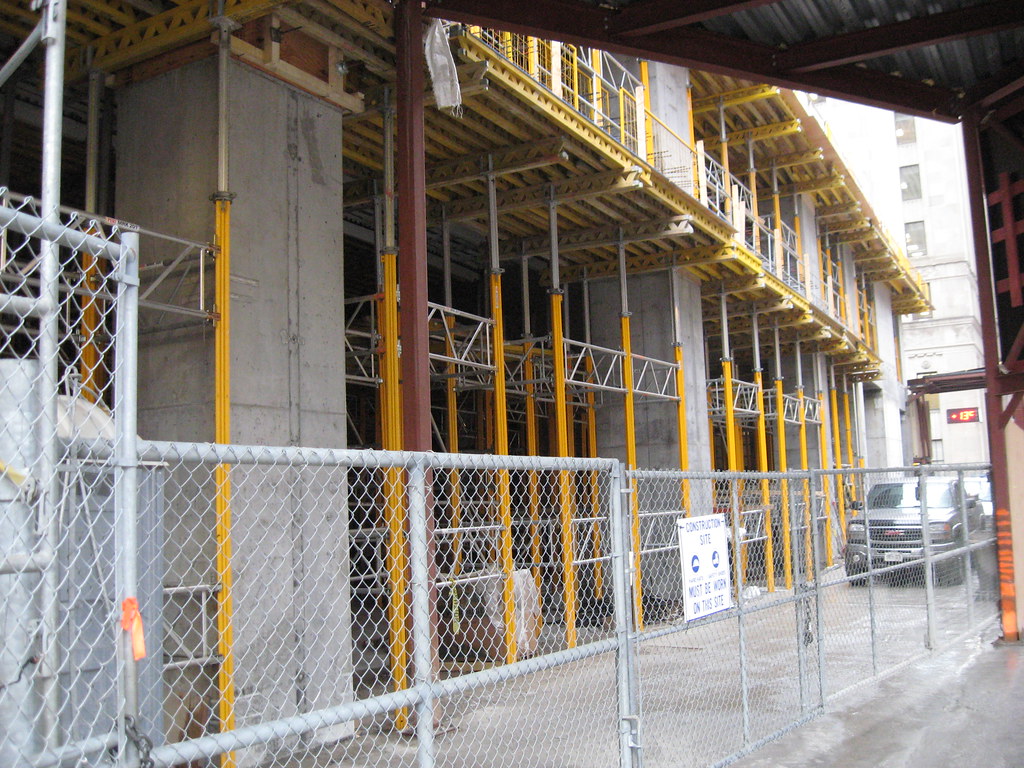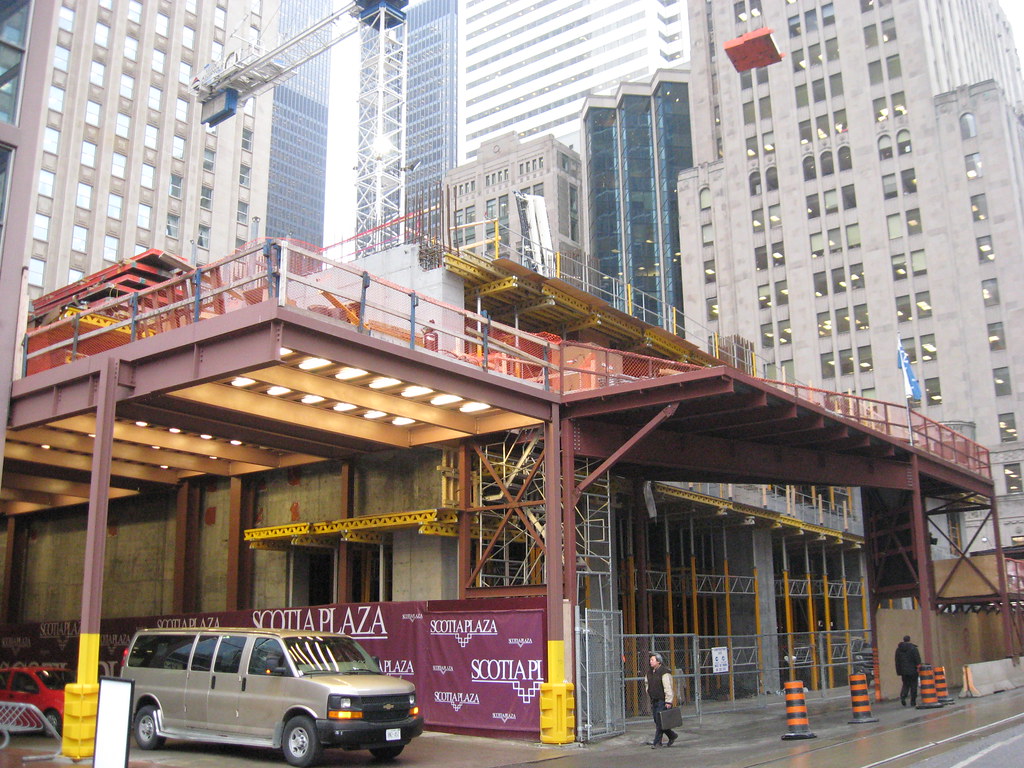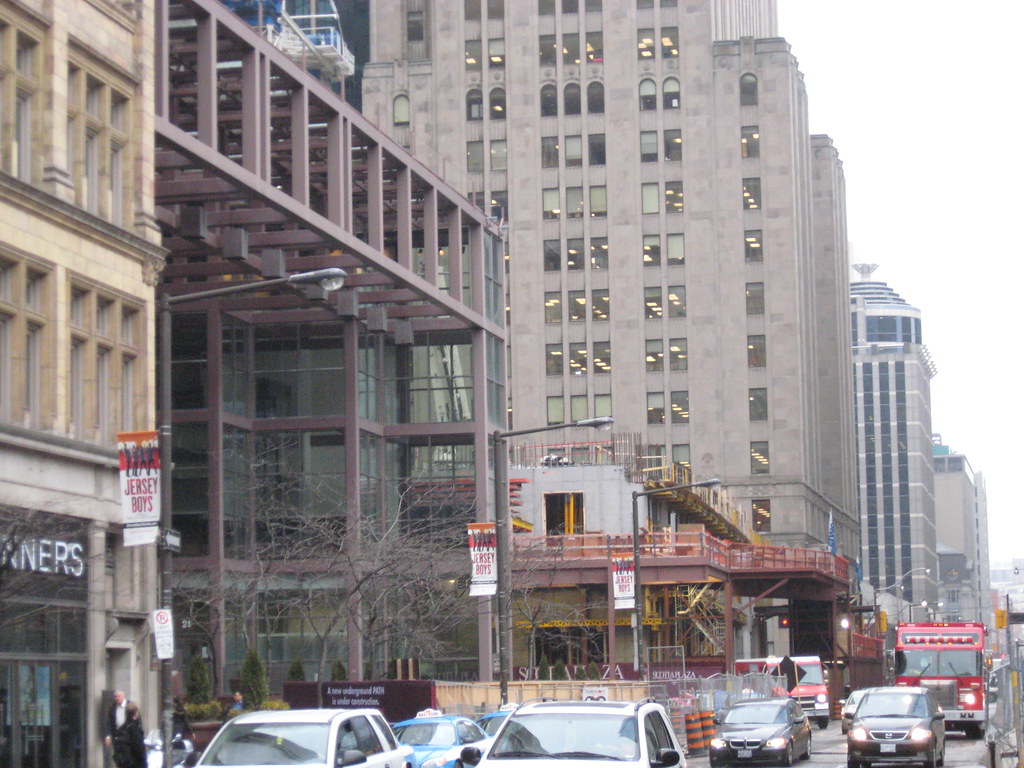p5connex
Active Member
Anyone feel like explaining how tension cables work in post-tensioned concrete? And what exactly is post-tensioned concrete?
Post-tensioned concrete is done on-site when casting floor slabs- what they do is lay steel cables across the area to be filled, in a material that allows them to not bond with the concrete and concrete is then poured in over top of the cables. As the concrete dries, the cables are tightened giving the slab compressional strength - the steel cables embedded in the concrete then provide the slab with tensional strength, something which is lost in the initial process of stressing the concrete. The benefits are that you optimize the component to get thinner and stronger more versatile concrete elements for the project you are building.
p5






